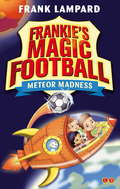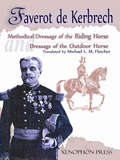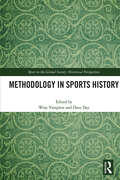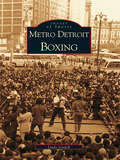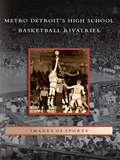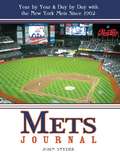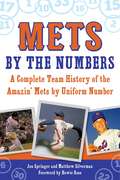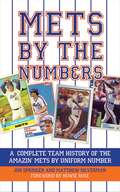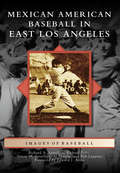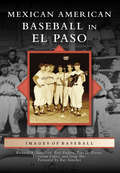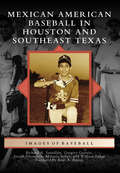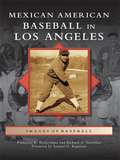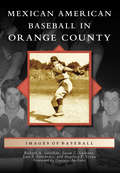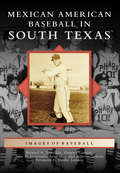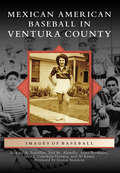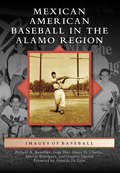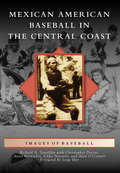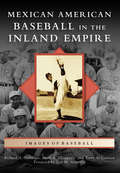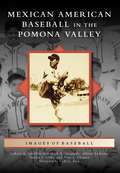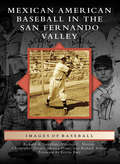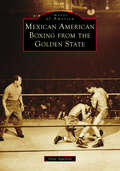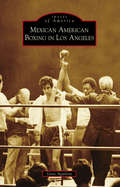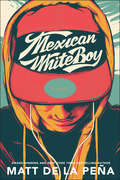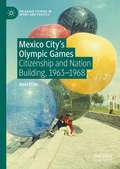- Table View
- List View
Meteor Madness: Book 12 (Frankie's Magic Football #12)
by Frank LampardFrankie and his team love playing football. There's always time for a game - especially in space!When Frankie and his friends climb into a broken Galaxy Quest ride, the shuttle sends them flying beyond the stars! Can Frankie and his team win a game against aliens, and save their new friends from a meteor? Frankie needs to win like never before!
Methodical Dressage of the Riding Horse and Dressage of the Outdoor Horse: From the Last Teaching of François Baucher as Recalled by One of His Students
by Michael L. M. Fletcher George De Lagarenne Faverot De KerbrechFaverot de Kerbrech's 'Methodical Dressage of the Riding Horse' is considered the 'Bible of Baucherism'. Together with it, in 'Dressage of the Outdoor Horse' General de Lagarenne gives us the teaching of Faverot de Kerbrech. Both excellently translated by Michael L. M. Fletcher. A horseman of great repute, Faverot remained the loyal successor to the work of François Baucher. The Master François Baucher brought numerous modifications to his first method of dressage. His best student, Faverot de Kerbrech gives us the definitive description and explanation of Baucher's second manner in his work: Methodical Dressage of the Saddle Horse from the Last Teaching of Baucher, recalled by one of his students (1891). Published twenty years after the death of Baucher, this work is the result of a quest to bring French equitation out of its academic approach; enriched by the experience of Baucher's most illustrious student. It is widely considered the best representation of Baucher's second method. In Dressage of the Outdoor Horse, General de Lagarenne gives us the last teaching of Faverot de Kerbrech. This work consists of a simplified progression of the second manner of Baucher with regard to the preparation of a horse for outdoor riding.
Methodology in Sports History (Sport in the Global Society - Historical Perspectives)
by Dave Day Wray VamplewThe process of converting the ‘past’ into ‘history’ involves engagement with a multitude of different sources and methods, and sports historians inevitably participate in the same debates over approaches and methodologies as their counterparts in other historical disciplines. At its heart, history remains a genre of empirical knowledge that is based upon the remains of the past, and without suitable evidence, there can be no sports history. A burgeoning range of sources has stimulated new ways of thinking and a significant expansion in the sports historian’s evidentiary base, as textual sources have been supplemented by photos, films and cartoons, uniforms, architecture, maps and landscapes, and material culture more generally. This book deals with some of these innovations. It is divided into two sections, the first offering chapter-length studies of particular methodologies, and the second, brief responses from experts in their fields to the question ‘what can sports historians learn from other disciplines?’
Metro Detroit Boxing (Images of Sports)
by Lindy LindellBoxing seemed to spring up in Detroit as early as 1900: heavyweight champ Jim Jeffries and future heavyweight champ Tommy Burns fought that year. With the emergence of Joe Louis in the 1930s and Thomas Mearns in the late 1970s, Motown enjoyed surges of interest in the sport. At the dawn of a new millenium, the presence of three casinos has given the sport another revival of interest in the city.Metro Detroit Boxing showcases over 180 photographs that reveal not only the personalities who have enlivened the sport in the Detroit area, but also the places in which boxers, trainers, managers, and promoters fought, trained, lived, worked, and recreated. Photographs include where Joe Louis went to school, trained, and fought. Various boxing celebrities, including Muhammad Ali, are caught for the camera, socializing with eminent politicians and other figures of the day.
Metro Detroit's High School Basketball Rivalries (Images of Sports)
by T. C. CameronFew cities can claim a hardwood heritage like that found in metro Detroit. Metro Detroit has been the epicenter for cataclysmic change in the past 60 years that no other major American city has suffered, but the one constant among so much upheaval is a passionate following afforded high school basketball. The rise and fall of the automotive industry, the Motown record label's emergence and eventual relocation, social and racial unrest, and the polarization of one of America's great cities has not slowed the love and passion Detroiters-city and suburban dwellers alike-share for prep basketball.
Mets Journal
by John SnyderBaseball fans will have their hands full well beyond the season of America's favorite game. Dividing the team's history into decades, years, and even days, Mets Journal offers hitting and pitching highlights, team and player stats, interesting and unusual facts - much more than just a box score. The book also includes photos, sidebars, statistics, and anecdotes, as well as lists of all-time hitting and pitching leaders, all-decade all-star teams, and even the all-time roster and uniform numbers.
Mets by the Numbers: A Complete Team History of the Amazin' Mets by Uniform Number
by Matthew Silverman Jon Springer Howie RoseThis is the first team history of the New York Mets-or any other team-to be told through a lighthearted analysis of uniform numbers. Ordinary club histories proceed year by year to give the big picture. Mets by the Numbers uses jersey numbers to tell the little stories-the ones the fans love-of the team and its players.This newly revised edition is a catalog of the more than 700 Mets who have played since 1962, but it is far from just a list of No. 18s and 41s. Mets by the Numbers celebrates the team’s greatest players, critiques numbers that have failed to attract talent, and singles out particularly productive numbers, and numbers that had really big nights.With coverage of superstitions, prolific jersey-wearers, the ever-changing Mets uniform, and significant Mets numbers not associated with uniforms, this book is a fascinating alternative history of the Amazin’s.Skyhorse Publishing, as well as our Sports Publishing imprint, are proud to publish a broad range of books for readers interested in sports-books about baseball, pro football, college football, pro and college basketball, hockey, or soccer, we have a book about your sport or your team.Whether you are a New York Yankees fan or hail from Red Sox nation; whether you are a die-hard Green Bay Packers or Dallas Cowboys fan; whether you root for the Kentucky Wildcats, Louisville Cardinals, UCLA Bruins, or Kansas Jayhawks; whether you route for the Boston Bruins, Toronto Maple Leafs, Montreal Canadiens, or Los Angeles Kings; we have a book for you. While not every title we publish becomes a New York Times bestseller or a national bestseller, we are committed to publishing books on subjects that are sometimes overlooked by other publishers and to authors whose work might not otherwise find a home.
Mets by the Numbers: A Complete Team History of the Amazin' Mets by Uniform Numbers
by Matthew Silverman Jon SpringerThis is the first team history of the New York Mets-or any other team-to be told through a lighthearted analysis of uniform numbers. Ordinary club histories proceed year by year to give the big picture. Mets by the Numbers uses jersey numbers to tell the little stories-the ones the fans love-of the team and its players. This is a catalog of the more than 700 Mets who have played since 1962, but it is far from just a list of No. 18s and 41s. Mets by the Numbers celebrates the team's greatest players, critiques numbers that have failed to attract talent, and singles out particularly productive numbers, and numbers that had really big nights. With coverage of superstitions, prolific jersey-wearers, the ever-changing Mets uniform, and significant Mets numbers not associated with uniforms, this book is a fascinating alternative history of the Amazin's. 75 b/w photographs.
Mexican American Baseball in East Los Angeles (Images of Baseball)
by Richard A. Santillán Al Padilla Bob Lagunas Richard Peña Teresa M. SantillánMexican American Baseball in East Los Angeles highlights the unforgettable teams, players, and coaches who graced the hallowed fields of East Los Angeles between 1917 and 2016 and brought immense joy and honor to their neighborhoods. Off the field, these players and their families helped create the multibillion-dollar wealth that depended on their backbreaking labor. More than a game, baseball and softball were political instruments designed to promote and empower civil, political, cultural, and gender rights, confronting head-on the reactionary forces of prejudice, intolerance, sexism, and xenophobia. A century later, baseball and softball are more popular than ever in East Los Angeles. Dedicated coaches still produce gifted players and future community leaders. These breathtaking photographs and heartfelt stories shed unparalleled light to the long and rich history of baseball and softball in the largest Mexican American community in the United States.
Mexican American Baseball in El Paso (Images of Baseball)
by Richard A. Santillan Donavan Lopez Eric Enders Pete G. FloresMexican American Baseball in El Paso chronicles the vibrant and colorful history of baseball in the El Paso–Juárez border region. For more than a century, baseball along the border has served as a means of bringing together people of all backgrounds, races, and nationalities, from the fly-by-night teams of the Pancho Villa era to the fabled semiprofessional clubs of the Lower Valley League. For the area’s Mexican and Mexican American citizens, storied teams like the Juárez Indios, Fabens Merchants, 1949 Bowie Bears, and El Paso Diablos served as both community rallying points and signposts of cultural identity. From the legendary semiprofessional players of decades past to the most recent major leaguers, this book presents the photographic history of baseball in America’s largest border community.
Mexican American Baseball in Houston and Southeast Texas (Images of Baseball)
by Richard A. Santillán Gregory Garrett Ramos Joseph Thompson Mikaela Selley William LangeMexican American Baseball in Houston and Southeast Texas pays tribute to the baseball and softball players and teams from Houston, Sugar Land, Texas City, Richmond, and other surrounding communities in the region. Since the early 1900s, this game has had an important role in the lives of area Mexican Americans. In the Houston barrios, when entrenched discriminatory practices obstructed city unity, the diamond brought people together. In the Sugar Land region, Mexican Americans, African Americans, and Anglos worked and played together, blurring racial lines. Baseball and softball built community pride and connected generations of Mexican American families. The wonderful stories and breathtaking images in this book help resurrect the rich and little-known history of Mexican American baseball and softball in this key part of Texas.
Mexican American Baseball in Los Angeles (Images of Baseball)
by Francisco E. Balderrama Samuel O. Regalado Richard A. SantillanImages of Baseball: Mexican American Baseball in Los Angeles celebrates the flourishing culture of the great pastime in East Los Angeles and other communities where a strong sense of Mexican identity and pride was fostered in a sporting atmosphere of both fierce athleticism and social celebration. From 1900, with the establishment of the Mexican immigrant community, to the rise of Fernandomania in the 1980s, baseball diamonds in greater Los Angeles were both proving grounds for youth as they entered their educations and careers, and the foundation for the talented Forty-Sixty Club, comprised of players of at least 40, and often over 60, years of age. These evocative photographs look back on the great Mexican American teams and players of the 20th century, including the famous Chorizeros--the proclaimed "Yankees of East L.A."
Mexican American Baseball in Orange County (Images of Baseball)
by Gustavo Arellano Richard A. Santillan Angelina F. Veyna Luis F. Fernandez Susan C. LuévanoImages of Baseball: Mexican American Baseball in Orange County celebrates the once-vibrant culture of baseball and softball teams from Placentia, Anaheim, Santa Ana, Westminster, San Juan Capistrano, and nearby towns. Baseball allowed men and women to showcase their athletic and leadership skills, engaged family members, and enabled community members to develop social and political networks. Players from the barrios and colonias of La Fábrica, Campo Colorado, La Jolla, Logan, Cypress Street, El Modena, and La Colonia Independencia, among others, affirmed their Mexican and American identities through their sport. Such legendary teams as the Placentia Merchants, the Juveniles of La Habra, the Lionettes de Orange, the Toreros of Westminster, and the Road Kings of Colonia 17th made weekends memorable. Players and their families helped create the economic backbone and wealth evident in Orange County today. This book sheds light on powerful images and stories of the Mexican American community.
Mexican American Baseball in South Texas (Images of Baseball)
by Richard A. Santillán Gregory Garrett Jorge Iber Juan D. Coronado Roberto ZamoraMexican American Baseball in South Texas pays tribute to the former baseball teams and players from Edinburg, McAllen, Mission, Pharr, Donna, Alamo, San Juan, Brownsville, Harlingen, and other surrounding communities. From the late 19th century through the 1950s, baseball in South Texas provided opportunities for nurturing athletic and educational skills, reaffirming ethnic identity, promoting political self-determination, developing economic autonomy, and reshaping gender roles for women. Games were special times where Mexican Americans found refuge from backbreaking work and prejudice. These unmatched photographs and stories shed light on the rich history of baseball in this region of Texas.
Mexican American Baseball in Ventura County (Images of Baseball)
by Anna Bermúdez Richard A. Santillán José M. Alamillo Al Ramos Juan J. Canchola-VenturaMexican American Baseball in Ventura County pays tribute to the legendary teams and players from Ventura, Oxnard, Camarillo, Simi Valley, Moorpark, Santa Paula, and other surrounding neighborhoods. From the early 20th century through the 1950s, baseball in Ventura County safeguarded opportunities for nurturing athletic and educational skills, asserting ethnic identity, promoting political self-confidence, developing economic autonomy, and redefining gender roles for women. Outside the ball field, these players and their families helped create the multibillion-dollar agricultural wealth that relied heavily on their backbreaking labor. These extraordinary photographs and remarkable stories shed unparalleled light on the long and rich history of baseball and softball in this celebrated region of California.
Mexican American Baseball in the Alamo Region (Images of Baseball)
by Richard A. Santillán Grace G. Charles Gregory Garrett Jorge Iber Alberto RodríguezMexican American Baseball in the Alamo Region celebrates the game as it was played in the Tejano and Tejana communities throughout Texas. This regional focus explores the importance of the game at a time when Spanish-speaking people were demanding cultural acceptance and their political and civil rights in cities like San Antonio, Corpus Christi, New Braunfels, San Diego, Kingsville, and Pleasanton. All had thriving Mexican American communities that found comfort in the game and pride in their abilities on the field. On these pages are historical images and wonderful stories that are now immortalized, taking their rightful place in the annuals of the game. ¡Viva Tejas, Viva Béisbol, y Viva los Peloteros!
Mexican American Baseball in the Central Coast (Images of Baseball)
by Alan O'Connor Christopher Docter Anna Bermúdez Richard A. Santillán Eddie NavarroMexican American Baseball in the Central Coast pays tribute to the teams and players who brought joy and honor to their fans and communities in Ventura and Santa Barbara Counties. Baseball was played before enthusiastic crowds in Piru, Santa Paula, Fillmore, Ventura, Oxnard, Camarillo, Ojai, Carpinteria, Santa Barbara, Goleta, Santa Maria, Guadalupe, Lompoc, and other communities. Players and their families helped create the economic infrastructure and prosperity that are evident today in the Central Coast. For women, softball was a social counterbalance to the strict cultural roles defined by society. Many former players dedicated their lives to the unrelenting struggle for social justice, while others devoted themselves to youth sports. This book remedies the glaring omission of baseball images and stories of Mexican American neighborhoods in the Central Coast of California.
Mexican American Baseball in the Inland Empire (Images of Baseball)
by Richard A. Santillan Mark A. Ocegueda José M. Alamillo Terry A. CannonMexican American Baseball in the Inland Empire celebrates the thriving culture of former teams from Pomona, Ontario, Cucamonga, Chino, Claremont, San Bernardino, Colton, Riverside, Corona, Beaumont, and the Coachella Valley. From the early 20th century through the 1950s, baseball diamonds in the Inland Empire provided unique opportunities for nurturing athletic and educational skills, ethnic identity, and political self-determination for Mexican Americans during an era of segregation. Legendary men's and women's teams--such as the Corona Athletics, San Bernardino's Mitla Café, the Colton Mercuries, and Las Debs de Corona--served as an important means for Mexican American communities to examine civil and educational rights and offer valuable insight on social, cultural, and gender roles. These evocative photographs recall the often-neglected history of Mexican American barrio baseball clubs of the Inland Empire.
Mexican American Baseball in the Pomona Valley (Images of Baseball)
by Richard A. Santillan Mark A. Ocegueda Sandra L. Uribe Alfonso Ledesma Alejo L. VasquezThis volume pays homage to the wonderful teams and players from Azusa, La Verne, Claremont, Pomona, Chino, Cucamonga, Ontario, and Upland. A common thread of all these diverse communities was the establishment of baseball teams and, later, softball teams. Baseball played a critical role in advancing civil and political rights, labor reform, gender equality, educational integration, and cultural legitimacy. These remarkable photographs revive the often-overlooked history of Mexican American baseball in the Greater Pomona Valley.
Mexican American Baseball in the San Fernando Valley (Images of Baseball)
by Richard A. Santillan Christopher Docter Monica Ortez Richard Arroyo Victoria C. NortonMexican American Baseball in the San Fernando Valley explores the teams and players that dotted the valley landscape throughout the 20th century. In a time and place where Mexican Americans were closed off from many city recreation centers, neighborhoods formed their own teams. Baseball and softball reinforced community and regional ties, strengthened family bonds, instilled discipline and dedication that translated into future professional careers, provided women opportunities outside their traditional roles in the home, and fostered lifelong friendships. These photographs serve as a lens to both local sports history and Mexican American history.
Mexican American Boxing from the Golden State (Images of America)
by Gene AguileraThe Mexican American boxer is one who leaves it all in the ring. They have been described as devastating punchers, fearless fighters, and tough competitors by boxing fans, sportswriters, and commentators alike. Mexican American boxers have long carried a reputation in boxing circles as being the ultimate crowd-pleasers. In continuing that tradition, the dramatic testimonies of seven distinct, valiant, and dashing warriors from the Golden State of California are presented here in intricate detail: Aurelio Herrera, Art Aragon, Mando Ramos, Bobby Chacon, "Yaqui" Lopez, Arturo Frias, and Oscar Muniz. By exposing new generations to their action-packed stories, new life is breathed into these talented and gifted boxers, ensuring their fighting spirit and heartfelt memories will never die. This volume salutes these pioneers of Mexican American boxing for opening the doors for today's boxers.
Mexican American Boxing from the Golden State (Images of America)
by Gene AguileraThe Mexican American boxer is one who leaves it all in the ring. They have been described as devastating punchers, fearless fighters, and tough competitors by boxing fans, sportswriters, and commentators alike. Mexican American boxers have long carried a reputation in boxing circles as being the ultimate crowd-pleasers. In continuing that tradition, the dramatic testimonies of seven distinct, valiant, and dashing warriors from the Golden State of California are presented here in intricate detail: Aurelio Herrera, Art Aragon, Mando Ramos, Bobby Chacon, "Yaqui" Lopez, Arturo Frias, and Oscar Muniz. By exposing new generations to their action-packed stories, new life is breathed into these talented and gifted boxers, ensuring their fighting spirit and heartfelt memories will never die. This volume salutes these pioneers of Mexican American boxing for opening the doors for today's boxers.
Mexican American Boxing in Los Angeles (Images of America)
by Gene AguileraWelcome to the colorful, flamboyant, and wonderful world of Mexican American boxing in Los Angeles. From the minute they stepped into the ring, Mexican American fighters have electrified fans with their explosiveness and courage. These historical images bring to life a sociological culture consisting of knockouts, the Main Street Gym, the Olympic Auditorium, neighborhood rivalries, Mexican idols, posters, and promoters. Like a winding thread, "the Golden Boy" Art Aragon bobs and weaves throughout the book. From "Mexican" Joe Rivers to Oscar De La Hoya, the true stories of their sensational ring wars are told while keeping alive the spirit and legacy of Mexican American boxing from the greater Los Angeles area.
Mexican WhiteBoy
by Matt de la PeñaDANNY'S TALL AND skinny. Even though he's not built, his arms are long enough to give his pitch a power so fierce any college scout would sign him on the spot. A 95 mph fastball, but the boy's not even on a team. Every time he gets up on the mound he loses it.But at his private school, they don't expect much else from him. Danny's brown. Half-Mexican brown. And growing up in San Diego that close to the border means everyone else knows exactly who he is before he even opens his mouth. Before they find out he can't speak Spanish, and before they realize his mom has blond hair and blue eyes, they've got him pegged. Danny's convinced it's his whiteness that sent his father back to Mexico. And that's why he's spending the summer with his dad's family. Only, to find himself, he might just have to face the demons he refuses to see right in front of his face.From the Hardcover edition.
Mexico City's Olympic Games: Citizenship and Nation Building, 1963-1968 (Palgrave Studies in Sport and Politics)
by Axel ElíasThis book looks at the 1968 Summer Olympic Games as a complex nation-building project. Sports mega-events have been mostly studied as homogenous government-led strategies, but more work is needed around the diverse reception and performances. The preparation period for the Olympics in Mexico and especially the year 1968 highlight the multiplicity of voices behind these exercises. Beyond the government and associated networks, the citizenry also used this mega-event to present an idea of Mexico to the world and thus reshape citizenship and nationhood. This study takes a bottom-up approach to look at the citizenry’s experiences of the 1968 Olympic Games, both the shared nationalistic values and the areas of conflict.
